Tetrasodium pyrophosphate
Synonym(s):Pyrophosphate inorganic;Sodium diphosphate tetrabasic;tetra-Sodium diphosphate decahydrate;Tetrasodium pyrophosphate;tetra-Sodium pyrophosphate, TSPP
- CAS NO.:7722-88-5
- Empirical Formula: Na4O7P2
- Molecular Weight: 265.902402
- MDL number: MFCD00003513
- EINECS: 231-767-1
- SAFETY DATA SHEET (SDS)
- Update Date: 2025-12-17 09:49:39
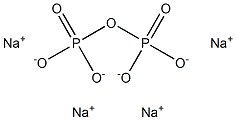
What is Tetrasodium pyrophosphate?
Description
Sodium pyrophosphate, also called Tetrasodium pyrophosphate or TSPP is used in the laboratory as a buffering agent. The compound has been shown to be useful in the preparation of an EDTA-sodium pyrophosphate extraction buffer for microcystin analysis of soil samples. Tetrasodium pyrophosphate is an odorless, white powder or granules. It is used in water softener, buffering agent, thickening agent, dispersing agent, wool de-fatting agent, metal cleaner, soap and synthetic detergent builder, general sequestering agent, in electrodeposition of metals. It also acts as a tartar control agent in toothpaste and dental floss. In addition, it is used as a chelating agent in antimicrobial studies. It is also used as a food additive in common foods such as chicken nuggets, crab meat and canned tuna.
Chemical properties
Tetrasodium pyrophosphate is a white crystalline powder or colourless crystals with the formula Na4P2O7. It contains the pyrophosphate ion and sodium cation. Toxicity is approximately twice that of table salt when ingested orally. There is also a hydrated form, Na4P2O7.10H2O.
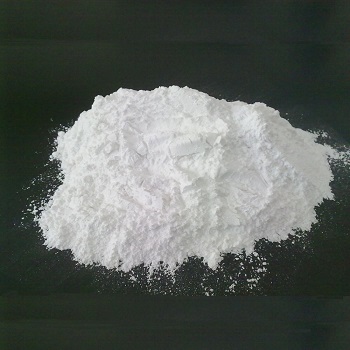
Tetrasodium pyrophosphate is used as a buffering agent, an emulsifier, a dispersing agent, and a thickening agent, and is often used as a food additive. It is widely used as an emulsifying salt (ES) in process cheese. Common foods containing sodium pyrophosphate include chicken nuggets, marshmallows, pudding, crab meat, imitation crab, canned tuna, and soy-based meat alternatives and cat foods and cat treats where it is used as a palatability enhancer. It is the active ingredient in Bakewell, the substitute for baking powder's acid component marketed during shortages in World War II. It is also used in some common baking powders.
The Uses of Tetrasodium pyrophosphate
Pharmaceutic aid.
Tetrasodium pyrophosphate (Na4P2O7) is a non-toxic and biocompatible compound used as an electroactive media for exfoliation of the surface coating. It is also be used as an additive in the food industry.
Na4P2O7 can be used as an inorganic additive to improve the stability and electrochemical performance of redox flow batteries.
The Uses of Tetrasodium pyrophosphate
Tetrasodium Pyrophosphate is a coagulant, emulsifier, and sequestrant that is mildly alkaline, with a ph of 10. it is moderately soluble in water, with a solubility of 0.8 g/100 ml at 25°c. it is used as a coagulant in noncooked instant puddings to provide thicken- ing. it functions in cheese to reduce the meltability and fat separa- tion. it is used as a dispersant in malted milk and chocolate drink powders. it prevents crystal formation in tuna. it is also termed sodium pyrophosphate, tetrasodium diphosphate, and tspp.
The Uses of Tetrasodium pyrophosphate
As a water softener; as a metal cleaner; as a dispersing and emulsifying agent.
What are the applications of Application
Sodium pyrophosphate tetrabasic is anhydrous form, pyrophosphate salt used in buffers
Preparation
Tetrasodium pyrophosphate is formed when pure disodium hydrogen orthophosphate is heated to 500℃ for 5 hours. The product will contain better than 98 per cent Na4P2O7. Crystalline masses large enough for optical measurements are produced by heating in platinum to above the melting point of the tetrasodium pyrophosphate, 800°, and cooling slowly. Higher temperatures or longer heating times do not change the tetrasodium pyrophosphate, as this is the final product in the dehydration of disodium hydrogen orthophosphate.
Definition
ChEBI: Sodium diphosphate is an inorganic sodium salt comprised of a diphosphate(4-) anion and four sodium(1+) cations. More commonly known as tetrasodium pyrophosphate, it finds much use in the food industry as an emulsifier and in dental hygiene as a calcium-chelating salt. It has a role as a food emulsifier, a chelator and a food thickening agent. It contains a diphosphate(4-).
General Description
Odorless, white powder or granules. Mp: 995°C. Density: 2.53 g cm-3. Solubility in water: 3.16 g / 100 mL (cold water); 40.26 g / 100 mL boiling water. Used as a wool de-fatting agent, in bleaching operations, as a food additive. The related substance Tetrasodium pyrophosphate decahydrate (Na4P2O7 0H2O) occurs as colorless transparent crystals. Loses its water when heated to 93.8°C.
Reactivity Profile
Tetrasodium pyrophosphate is basic. Reacts exothermically with acids. Incompatible with strong oxidizing agents. Decomposes in ethyl alcohol.
Hazard
Toxic by inhalation.
Health Hazard
Tetrasodium pyrophosphate (TSPP) is of low toxicity, but the dust may be irritating to the eyes, upper respiratory tract, and skin. Mild to moderate skin and eye irritation have occurred with acute exposure to the dust.
Safety Profile
Poison by ingestion, intraperitoneal, intravenous, and subcutaneous routes. It is not a cholinesterase inhibitor. When heated to decomposition it emits toxic fumes of POx and Na2O.
Properties of Tetrasodium pyrophosphate
| Melting point: | 80 °C |
| Boiling point: | 93.8 °C |
| Density | 2.53 g/mL at 25 °C(lit.) |
| vapor pressure | 0Pa at 20℃ |
| storage temp. | Inert atmosphere,Room Temperature |
| solubility | H2O: 0.1 M at 20 °C, clear, colorless |
| form | Granular |
| color | White |
| Specific Gravity | 2.534 |
| PH Range | 10.3 |
| Odor | Odorless |
| Water Solubility | Soluble in water. Insoluble in ethyl alcohol. |
| Sensitive | Hygroscopic |
| Merck | 14,9240 |
| Exposure limits | NIOSH: TWA 5 mg/m3 |
| Stability: | Stable. Incompatible with strong oxidizing agents. |
| CAS DataBase Reference | 7722-88-5(CAS DataBase Reference) |
| EPA Substance Registry System | Tetrasodium pyrophosphate (7722-88-5) |
Safety information for Tetrasodium pyrophosphate
| Signal word | Danger |
| Pictogram(s) |
 Corrosion Corrosives GHS05 |
| GHS Hazard Statements |
H318:Serious eye damage/eye irritation |
| Precautionary Statement Codes |
P280:Wear protective gloves/protective clothing/eye protection/face protection. P305+P351+P338:IF IN EYES: Rinse cautiously with water for several minutes. Remove contact lenses, if present and easy to do. Continuerinsing. |
Computed Descriptors for Tetrasodium pyrophosphate
| InChIKey | FQENQNTWSFEDLI-UHFFFAOYSA-J |
Tetrasodium pyrophosphate manufacturer
JSK Chemicals
H. K. Group
New Products
4,4-Difluoropiperidine hydrochloride tert-butyl 9-methoxy-3-azaspiro[5.5]undecane-3-carboxylate Indole Methyl Resin N-Isopropylurea N,N-Dicyclohexylcarbodiimide(DCC) MELDRUMS ACID 5-METHYLISOXAZOLE-4-CARBOXYLIC ACID Magnessium Bis glycinate Zinc ascorbate 1-bromo-2-butyne 2-acetamidophenol 9(10H)-anthracenone Erythrosin B, 4-Piperidinopiperidine 2-((4-morpholinophenylamino) (methylthio) methylene) malononitrile 2,4-dihydroxybenzaldehyde 3-(4-morpholinophenylamino)-5-amino-1H-pyrazole-4-carbonitrile Methyl 2-methylquinoline-6-carboxylate 2,6-dichloro-4-nitropyridine 4-Bromo-2-chlorobenzonitrile 2-(benzylamino)acetic acid hydrochloride 4-(tert-Butoxycarbonylamino)but- 2-ynoic acid 3,4-dihydro-2H-benzo[b][1,4]dioxepine 1-Phenyl-1-cycloprppanecarboxylicacidRelated products of tetrahydrofuran
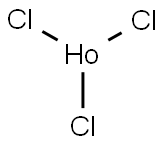
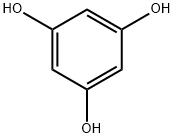






You may like
-
 tetra-Sodium pyrophosphate 98%View Details
tetra-Sodium pyrophosphate 98%View Details -
 Tetrasodium Pyrophosphate 99%View Details
Tetrasodium Pyrophosphate 99%View Details -
 Tetra Sodium Pyro Phosphate 99%View Details
Tetra Sodium Pyro Phosphate 99%View Details -
 Sodium pyrophosphate, Anhydrous CAS 7722-88-5View Details
Sodium pyrophosphate, Anhydrous CAS 7722-88-5View Details
7722-88-5 -
 TETRA-SODIUM PYROPHOSPHATE ANHYDROUS 99%View Details
TETRA-SODIUM PYROPHOSPHATE ANHYDROUS 99%View Details
13472-36-2 -
 Tetrasodium Pyrophosphate Anhydrous (TSPP anhy) extrapure CAS 7722-88-5View Details
Tetrasodium Pyrophosphate Anhydrous (TSPP anhy) extrapure CAS 7722-88-5View Details
7722-88-5 -
 Sodium pyrophosphate tetrabasic 95.00% CAS 7722-88-5View Details
Sodium pyrophosphate tetrabasic 95.00% CAS 7722-88-5View Details
7722-88-5 -
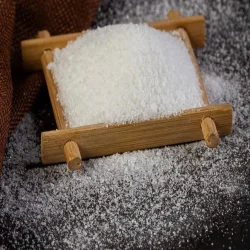 Tetrasodium Pyrophosphate CrystalView Details
Tetrasodium Pyrophosphate CrystalView Details
7722-88-5
